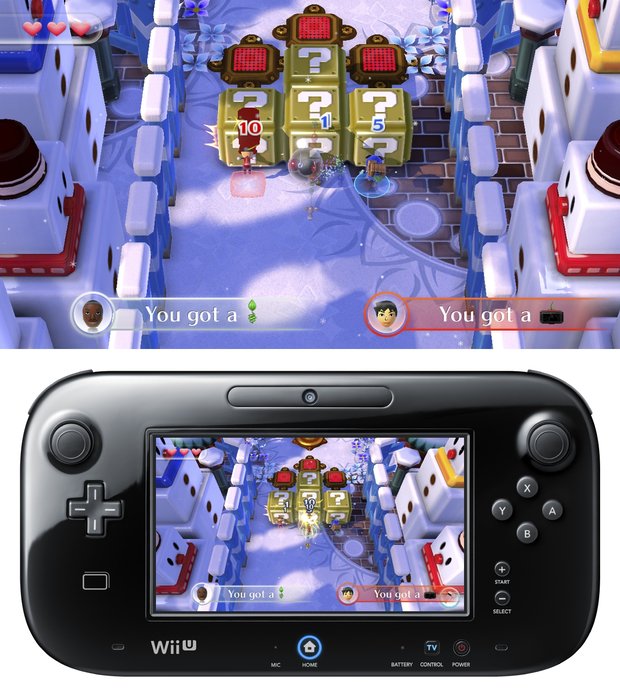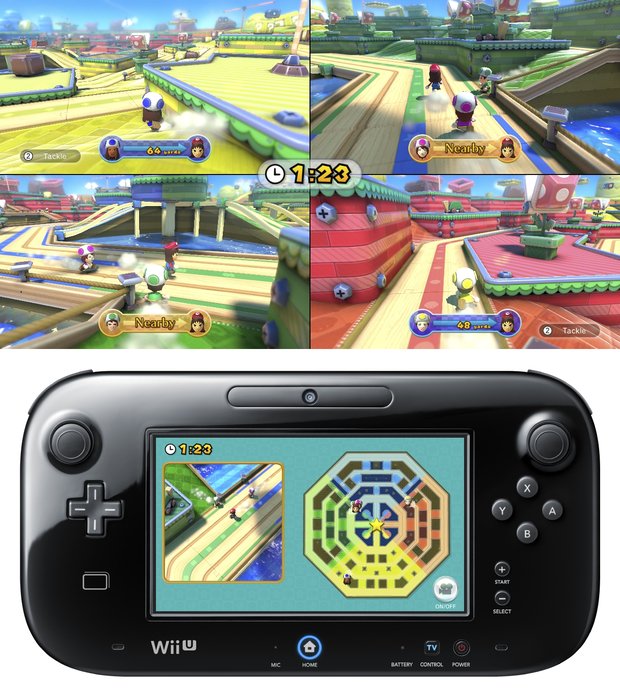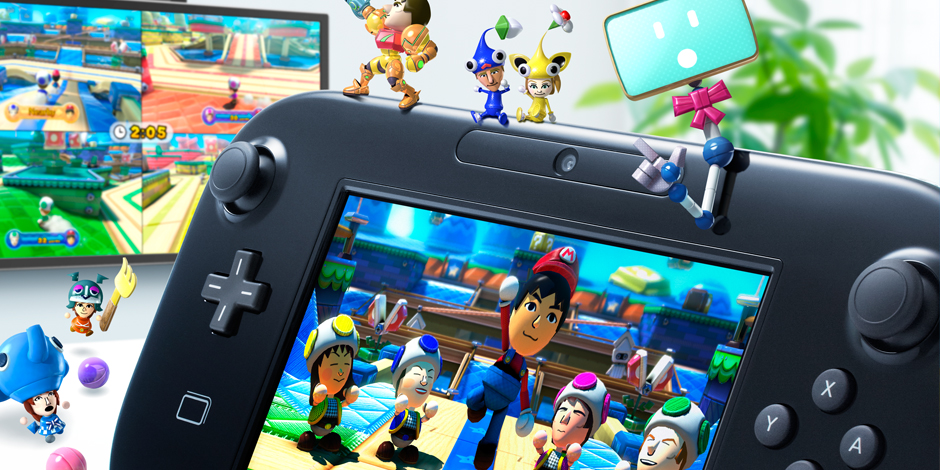GamesRadar+ Verdict
Pros
- +
Variety of novel uses for GamePad
- +
Colorful introduction to Nintendos new console
- +
Deeper multiplayer experiences than expected
Cons
- -
Weaker solo attractions are half the game
- -
Running out of things to do in the hub world
- -
Hearing instructions far too often
Why you can trust GamesRadar+
As with any new console, the Wii U needs the proverbial ”killer app” to sell the system to as wide an audience as possible. In the past Nintendo did it with games as diverse as Super Mario 64, Tetris, and Wii Sports, and the publisher is trying again on Wii U with the inviting minigame collection Nintendo Land. Attempting to straddle the line between casual players that loved the Wii and hardcore Nintendo fanboys, Nintendo Land satisfies both while being an adequate demo for the system, though it’s held back because it never decides on its true audience.
Nintendo Land is a virtual theme park created in tribute to more than 30 years of video game history. Overseen by a peculiar floating screen named Monita, the world is composed of a circular common area surrounded by a dozen different attractions (read: minigames) based on franchises like Zelda, Pikmin, and Donkey Kong. Though some may dismiss the graphics as too plain based on screens, Nintendo Land’s visuals impress when the game is actually played, as they create a colorful--if simple--landscape for your collection of Miis to experience.
The hub world has various unlockable items to enjoy, but any actual substance is found in the minigames. These 12 core attractions come in three different styles--solo, co-op, and vs.--and each uses the Wii U’s marquee GamePad controller in a different way. The minigames all find novel uses for the touchscreen, motion, and camera functionalities of the controller, but not all are created equal.

Half of the total attractions are of the single player variety, all using the GamePad exclusively. Captain Falcon’s Twister Race simplifies the F-Zero series into time trials that are controlled by tilting the GamePad, a cute diversion that barely approaches the thrills of the source. Balloon Trip Breeze reconfigures the forgotten NES game Balloon Fight to fit with quick slashes of the stylus on the touchscreen, an approach that ultimately makes it feel like a 3DS game. Yoshi’s Fruit Cart feels even more like a simple port from a Nintendo handheld with its main objective of drawing a safe pathway for Yoshi around multiple impediments.
The weaker half of the solo games start with Takumaru’s Ninja Castle, an attraction where you toss hundreds of throwing stars at cardboard ninjas, a repetitive action that gets old fast. Octopus Dance is a rhythm game based on an early Game & Watch title, and moving to the beat starts off fun but is a little too shallow. Single player is rounded out by Donkey Kong’s Crash Course, which gives you the goal of tilting the GamePad to guide a far too fragile cart through an obstacle course, something that would be fun if it wasn’t so hard.

For as disjointed as the solo play is, the six other attractions dedicated to two to five players are much more fun. The three vs. minigames are all variations on tag, but each finds its own innovative approach to it. Both Animal Crossing: Sweet Day and Luigi’s Ghost Mansion give the power to the GamePad holder, giving that person the responsibility to hunt down one to four players using Wii Remotes. Mario Chase reverses the situation, tasking the four Wii Remote holders with tracking down Mario on a large map. The gameplay might be thin for this trio of attractions, but all three make for a continually great time, especially with a full group of players.
Nintendo Land’s deepest attractions are found in the co-op section; all three are meant to be played in multiple sittings. Metroid Blast ends up being an exciting, Nintendo-style approach to Horde mode with the GamePad player supplying air support for ground troops blasting aliens. Pikmin Adventure is a pleasurable, fast-paced recreation of its source material, only with up to four players controlling the ant men that accompany the player using the GamePad. Lastly, The Legend of Zelda: Battle Quest makes for a worthwhile experience that takes you on an express tour of the enemies and dungeons that make that series so memorable.

As a whole, all 12 games contain enough variety to make Nintendo Land a perfectly satisfying way to familiarize yourself with the Wii U, but the reliance on Nintendo nostalgia is a blessing and a curse. Non-fans will be confused by references to little played NES and Game & Watch games. Oppositely, Nintendo fanboys will enjoy the references, but won’t like settling for imitations of games like F-Zero and Zelda instead of the real thing. In spite of all that, Nintendo Land is great introduction to the Wii U, even if it lacks the longevity of Wii Sports.
More info
| Genre | Adventure |
| Description | Nintendo Land is a fun and lively theme park filled with 12 different attractions, each with its own take on a Nintendo franchise. |
| Platform | "Wii U" |
| US censor rating | "Everyone 10+" |
| UK censor rating | "" |
| Release date | 1 January 1970 (US), 1 January 1970 (UK) |
Henry Gilbert is a former GamesRadar+ Editor, having spent seven years at the site helping to navigate our readers through the PS3 and Xbox 360 generation. Henry is now following another passion of his besides video games, working as the producer and podcast cohost of the popular Talking Simpsons and What a Cartoon podcasts.




